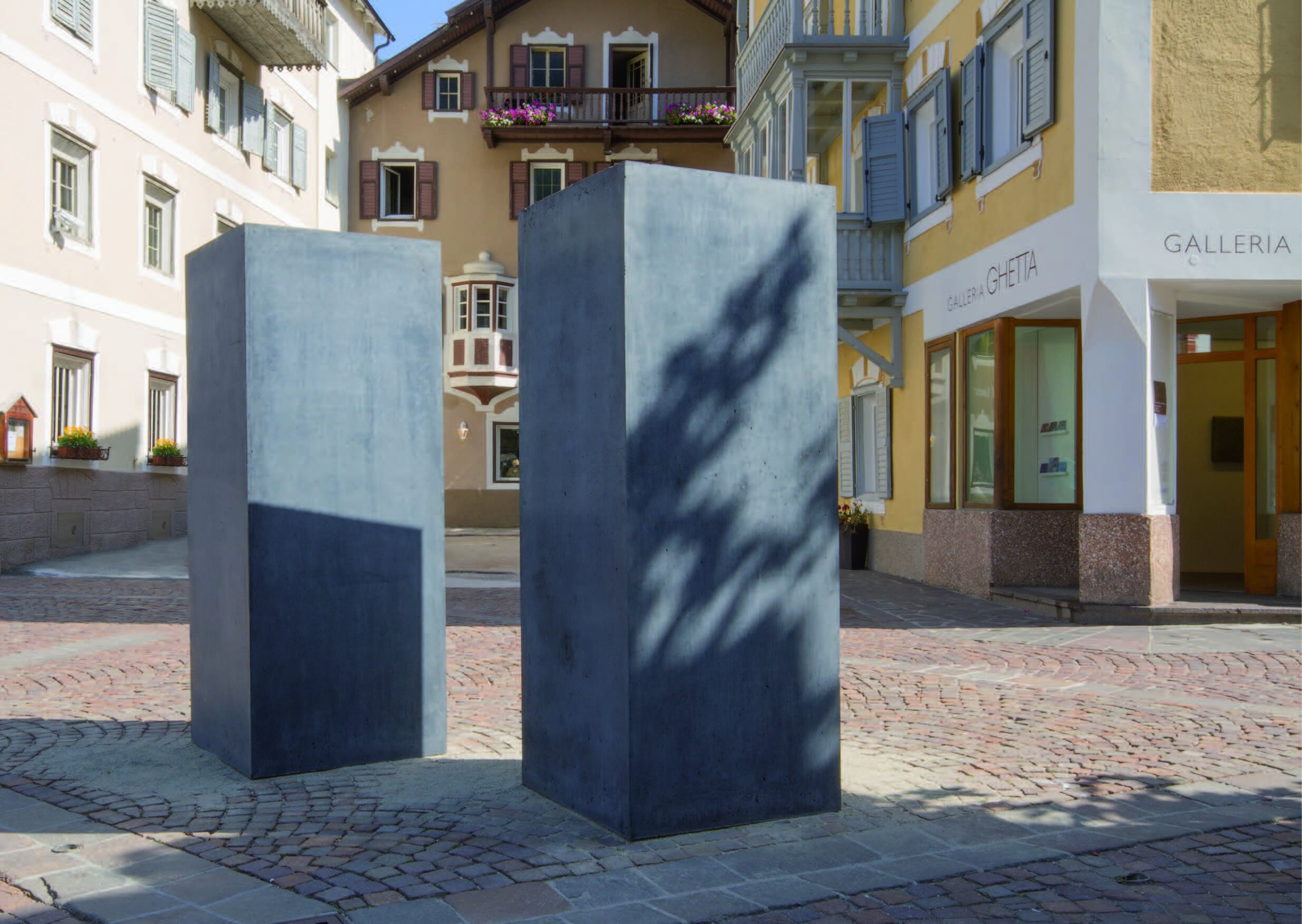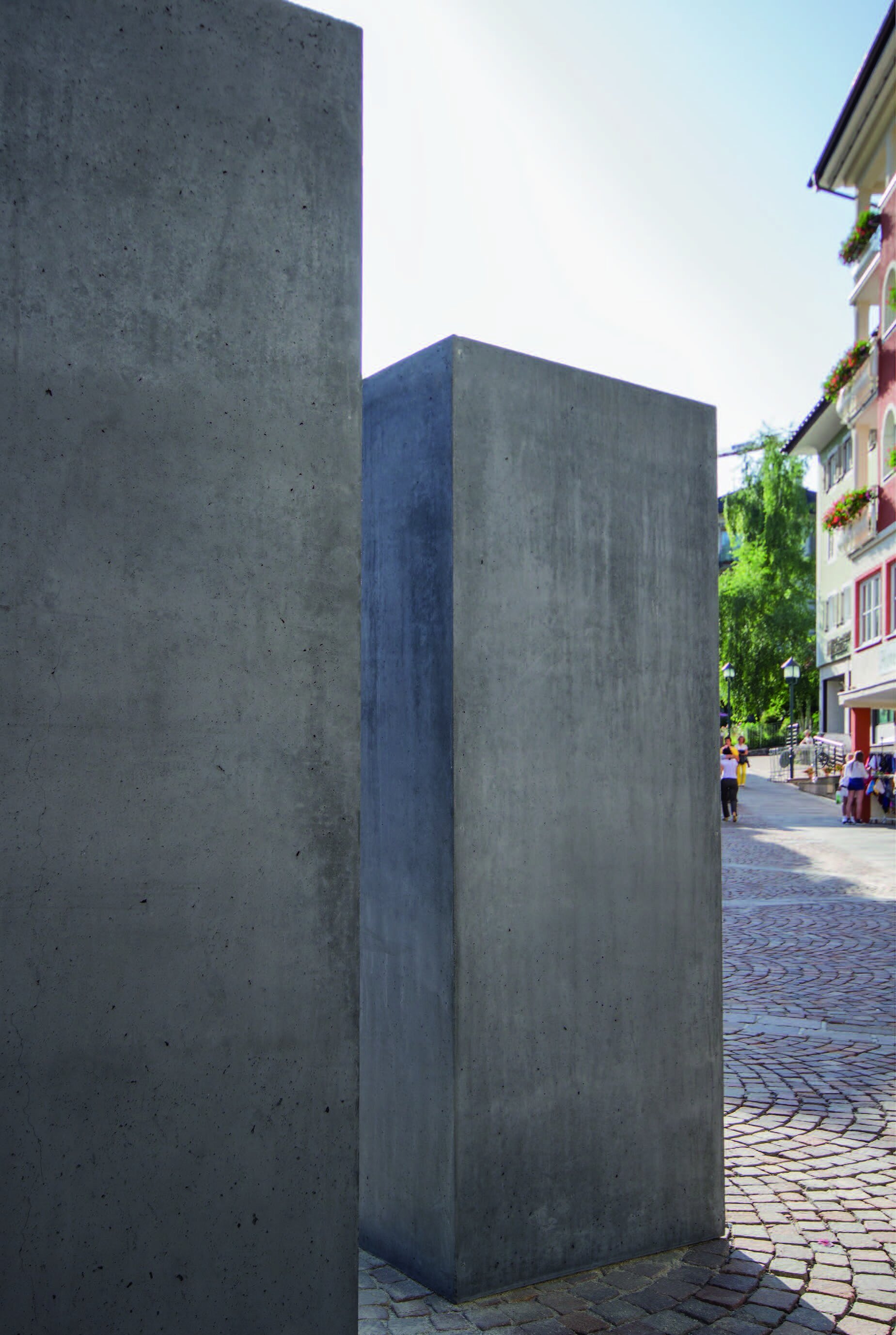
Walter Moroder
*1963, Italy
lives and works in Val Gardena, Italy
EN
Anyone who has ever seen a sculpture by Walter Moroder will never forget it: the artist creates figures of graceful appearance, they radiate a tenderness and dignity whose intensity is hard to resist. Slender, predominantly female figures characterise his sculptural work. They are life-size and of reduced form, very upright and slender, rather static in posture. Moroder prefers Swiss pine, the figures are mostly painted, the eyes made of glass. In the reception of his work, it is emphasised that the life-size sculptures, for all their modernity, are in the tradition of South Tyrolean carving, but at the same time are reminiscent of the formal language of ancient Egyptian pictorial art. Moroder creates sensitive, witty portraits, sensitive and vulnerable, at the same time unapproachable and distant, the features collected and yet not tense, archaic and yet modern, auratic and timeless. The viewer will not see all this in the pedestrian zone.
The work of Walter Moroder is surprising. The female figures have become his "trademark", and yet he has resisted the temptation to adapt them for public space. A carved wooden nude from 1985 (an academy work) was placed in a casing and cast in dark grey concrete so that nothing of the sculpture is visible. At the same time, he poured an exactly identical concrete block without the sculpture inside. Both blocks, worked to great perfection, can be seen in the pedestrian zone; the viewer is left in the dark as to which of the two hides the wooden sculpture. The four-ton monoliths have something indestructible about them; art vandals will have a hard time with them - a thought that certainly played a role in the conception of the work. Concrete was also deliberately chosen because this (building) material has a strong connection to the Val Gardena. Moroder makes the sculpture disappear and yet appear present, it is present, indeed preserved for eternity, but at the same time it remains hidden from the eye. The work is a wonderful reflection on the creative process (of course one has to think of Michelangelo's saying that the sculpture is already there, one only has to recognise and uncover it) and on one's own artistic development (the view of a work from 1985 with the eyes of 2012).
IT
Chi ha avuto modo di vedere una scultura di Walter Moroder non la dimentica più. L’artista crea figure dall’aspetto esile che trasmettono una delicatezza e una dignità alla cui intensità è quasi impossibile sottrarsi. Sono tipiche per la sua produzione scultorea figure snelle, prevalentemente femminili e a grandezza naturale. Le sculture, caratterizzate da una riduzione formale, si presentano ritte e longilinee, piuttosto statiche nel portamento. Le figure di Moroder, scolpite prevalentemente nel legno di cirmolo, sono in genere dipinte e hanno gli occhi di vetro. Nella ricezione della sua opera si sottolinea che le sculture presentano, pur nella loro modernità, i caratteri tipici della tradizione scultorea dell’Alto Adige, recuperando però anche elementi iconografici che si rifanno al linguaggio formale dell’Antico Egitto. Moroder crea ritratti delicati e arguti, sensibili e vulnerabili, al tempo stesso però inavvicinabili e assenti, con i tratti composti ma non tesi, arcaici e al tempo stesso moderni, senza tempo. Di tutto ciò, il passante non vedrà nulla nella zona pedonale.
L’opera di Walter Moroder sorprende. Le sue figure femminili sono diventate sempre più un vero e proprio marchio di fabbrica – nonostante ciò, Moroder ha resistito alla facile tentazione di procedere semplicemente ad un adattamento allo spazio pubblico. Un nudo scolpito nel 1985 (si tratta di un lavoro fatto all’accademia) è stato inserito in un’armatura e successivamente inglobato in un blocco di cemento grigio scuro. Della scultura non si vede più nulla. In contemporanea è stato prodotto un altro blocco di cemento, perfettamente identico al primo ma privo della scultura al suo interno. Entrambi i blocchi, studiati e realizzati con estrema accuratezza, sono esposti nella zona pedonale ma lo spettatore rimane all’oscuro su quale dei blocchi celi la scultura. I due monoliti di quattro tonnellate ciascuno paiono indistruttibili, eventuali vandali malintenzionati dovrebbero trovare difficoltà – un pensiero che ha accompagnato tutta la genesi dell’opera. Anche la scelta del cemento è intenzionale e significativa: tale materiale (da costruzione) ha, di fatto, una relazione molto stretta con la Val Gardena. Moroder fa sparire la scultura e al tempo stesso le permette di essere presente: è lì, conservata per l’eternità, e nel contempo è sottratta alla vista. L’opera diventa così una splendida riflessione sul processo creativo (ovviamente bisogna pensare alla nota affermazione di Michelangelo secondo cui la scultura è già presente, bisogna soltanto riconoscerla e liberarla) e sul proprio percorso artistico (lo sguardo su un lavoro del 1985 con gli occhi del 2012).
DE
Wer einmal eine Skulptur von Walter Moroder gesehen hat, wird sie nicht mehr vergessen: der Künstler erschafft Figuren von graziler Erscheinung, sie strahlen eine Zartheit und Würde aus, deren Intensität man sich kaum entziehen kann. Schlanke, überwiegend weibliche Figuren charakterisieren sein bildhauerisches Werk. Sie sind lebensgroß und von reduzierter Form, sehr aufrecht und sch-mal, eher statisch in der Haltung. Moroder bevorzugt Zirbelkiefer, die Figuren sind meist bemalt, die Augen aus Glas. In der Rezeption seiner Arbeit wird betont, dass die lebensgroßen Skulpturen bei aller Modernität handwerklich in der Tradition der Schnitzkunst Südtirols stehen, gleichzeitig aber an die Formensprache altägyptischer Bildkunst erinnern. Moroder erschafft einfühlsame geistreiche Porträts, empfindsam und verletzlich, gleichzeitig unnahbar und abwesend, die Züge gesammelt und doch nicht angespannt, archaisch und doch modern, auratisch und zeitlos. All das wird der Betrachter in der Fußgängerzone nicht sehen.
Die Arbeit von Walter Moroder überrascht. Die Frauenfiguren sind zu seinem „Markenzeichen“ geworden, und doch er hat der Versuchung widerstanden, diese für den öffentlichen Raum zu adaptieren. Ein geschnitzter Holzakt aus dem Jahr 1985 (eine Akademiearbeit) wurde in eine Verschalung gelegt und in dunkelgrauen Beton eingegossen, sodass von der Skulptur nichts mehr zu sehen ist. Zeitgleich goss er einen exakt gleichen Betonblock ohne Skulptur im Inneren. Beide Blöcke, in großer Perfektion bearbeitet, sind in der Fußgängerzone zu sehen, der Betrachter bleibt im Unklaren darüber, in welchem der beiden sich die Holzskulptur verbirgt. Die vier Tonnen schweren Monolithe haben etwas Unverwüstliches, Kunstvandale werden es mit ihnen schwer haben – ein Gedanke, der bei der Konzeption der Arbeit durchaus eine Rolle gespielt hat. Beton wurde auch deshalb ganz bewusst gewählt, da dieses (Bau-)Material einen starken Bezug zum Grödnertal aufweist. Moroder lässt die Skulptur verschwinden und dennoch präsent erschienen, sie ist vorhanden, ja für die Ewigkeit konserviert, gleichzeitig aber bleibt sie dem Auge verborgen. Die Arbeit ist eine wunderbare Reflexion über den kreativen Schaffensprozess (natürlich man muss an Michelangelo Ausspruch denken, die Skulptur sei schon da, man muss sie nur erkennen und freilegen) und über die eigene künstlerische Entwicklung (der Blick auf eine Arbeit aus 1985 mit den Augen von 2012).

